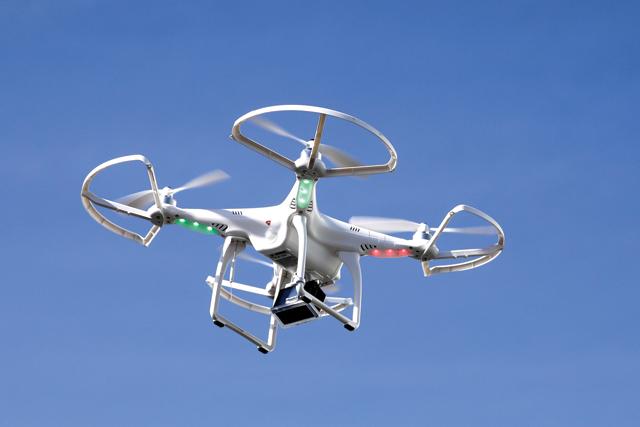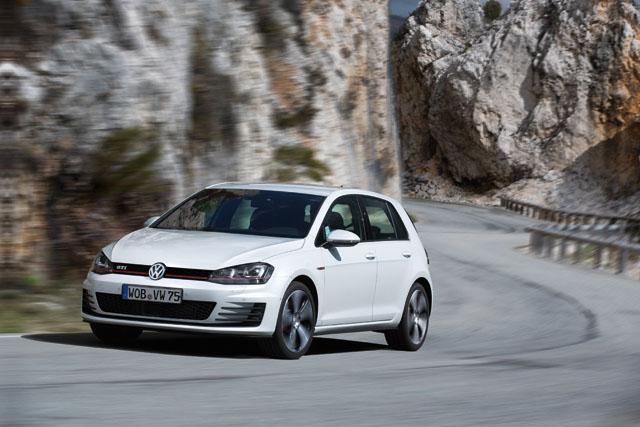The livelier and sportier version of Volkswagen’s classy hot hatch, the Golf GTI Performance makes the best use yet of the Mk7 generation Golf’s lighter partial aluminium construction with a 10BHP power hike over the regular Golf GTI. The more focused and driver-oriented edition of the new car, the Golf GTI Performance also features a mechanical limited-slip differential to complement the standard electronic XDS+ torque vectoring system.
A more engaging and athletic drive than its Mk6 predecessor — especially with the six-speed manual gearbox, as tested — the new Golf GTI makes performance, efficiency and space improvements, and delivers a well-balanced combination of agility and refinement.
Familiar but fresh
A car that virtually defined the hot hatch segment since 1974, the Golf GTI has over years grown larger, heavier and became more practical and luxurious. However, the new Golf GTI is a noticeably sportier, edgier and focused driving machine than the one it replaces, but at the same time is roomier, more advanced, better equipped and more refined than ever.
The improvements can in large part be attributed to the combination of Volkswagen’s part-aluminium MQB modular platform, which allows for a 42kg weight loss, in addition to engine efficiency improvements that yield 18 per cent fuel efficiency for both versions of the new model.
Elegant and somewhat conservative, the new Golf GTI’s design is evolutionary and consistent with the model’s gradual development, but however looks strikingly fresh, crisp and tidy.
With sharper lines, creases, angles, shapes and components in place of its predecessor’s more rounded edges and themes, the new GTI looks more up-market and sculpted. Slightly lower, wider and wheels pushed further out to corners, the Mk7 Golf GTI looks more athletic and toned.
More angular and squinting front and rear lights clusters look more dramatic, while sportier bumpers, body kit, dual exhaust pipes, tailgate spoiler and red pinstripe detailing subtly distinguish the GTI from a common garden-variety Golf.
Broad band
of bang
With a third generation evolution of Volkswagen’s direct injection turbocharged two-litre four-cylinder engine, featuring reduced friction, variable thermal management and a re-designed head, the new Golf GTI makes significant torque and power increases available earlier and over a broader rev range, while fuel efficiency and carbon emissions are similarly improved.
Euro six compliant, the new Golf GTI — in standard and Performance spec — develops 258lb/ft torque throughout 1,500-4,400rpm, returns 6L/100km combined cycle fuel efficiency and 139g/km carbon dioxide emissions, compared to its predecessor’s 207lb/ft, 7.3L/100km and 170g/km figures. Power rises from 207BHP at 5,300-6,200rpm to 227BHP at 4,700-6,200rpm for the tested GTI Performance version.
Lively, perky and muscular, the Golf GTI Performance suffers little by way of turbo lag and pounces tidily off the line and soon hits its broad mid-range maximum torque band. With 258lb/ft on tap in its crucial mid-range, the GTI Performance overtakes easily and quickly, while its power seamless build-up is brisk and under-written well with no flat spots.
A broad maximum 227BHP power range also allows one to better exploit the GTI Performance’s abilities and better time up-shifts. Smooth and refined, the GTI Performance feels effortless for town and highway driving yet eager to be wrung hard and high, completing the 0-100km/h sprint in 6.4-seconds.
Punch and move
Driven through a six-speed manual gearbox with a crisp, firm and precise shifter and intuitive clutch biting point, the GTI Performance launches with an exact level of aggression or smoothness as desired. Delivering its punchy power to the front wheels, the GTI Performance features two systems that reign in torque-steer on launch and prevent under-steer and keep it tidy and poised through quick cornering.
Supplementing the standard XDS+ electronic system that utilises selective braking, the Performance version also gets a more effective mechanical limited-slip differential that apportions more power to the wheel with best grip and best able to put it down to the tarmac.
Sticking and moving along the French Riviera and winding Maritime Alps like a toned and honed pugilist, the GTI performance does not miss a beat pouncing from one corner to the next. Sure-footed and poised the GTI Performance’s turn-in is tidy and grippy, with precise and quick steering, while brakes are reassuringly capable.
Faithful through tight corners, the GTI Performance has terrific body control and grip, while its limited-slip differential allows one to effectively utilise and come back on power early out of corners. Composed and quick, the responsive GTI Performance is ever eager to be harried along sprawling country lanes and tight mountain hairpins alike.
Up-market appeal
Smooth but firm, the Golf GTI Performance is a natural and stable highway driver, with a planted, reassuring and refined ride. On fast-paced B-roads the GTI Performance’s 225/40R18 tyres and suspension set-up is sporty and tight, with terrific vertical rebound control over crests and dips, but is not punishing or harsh. Comfortable and well insulated from noise, vibrations and harshness, for daily driving, the GTI Performance’s sporty ride can however feel noticeably firm over sudden and particularly bad cracks and potholes at slow town speeds.
With well-bolstered and highly adjustable seats and steering, good visibility, upright cabin and seating position, the GTI is easily placed on road.
Classy but sporty, the Golf GTI’s cabin features good fit and finish, soft textures, ergonomic driver-oriented controls and layouts and clear instrumentation. Tartan cloth upholstery and red stitching on the GTI Performance’s chunky and contoured flat-bottle sports steering wheel hark back to the original Mk1 GTI.
With five-door convenience, good headroom, improved legroom and well-spaced boot, the GTI is a rounded and versatile performance and family car. Elegant, well-built, refined, quick, and well-kitted with many standard convenience and optional high tech equipment like adaptive cruise control, city-braking braking and lane-keeping assists, the GTI Performance’s up-market appeal treads heavily on more “premium” brand hatchbacks’ toes.
SPECIFICATIONS
Engine: 2-litre, turbocharged transverse 4-cylinders
Bore x stroke: 82.5 x 92.8mm
Valve-train: 16-valve, DOHC, variable timing, direct injection
Gearbox: 6-speed manual, front-wheel-drive, limited-slip differential
Power, BHP (PS) [kW]: 227 (230) [169] @ 4,700-6,200rpm
Specific power: 114BHP/litre
Power-to-weight: 164BHP/ton
Torque, lb/ft (Nm): 258 (350) @ 1,500-4,400rpm
Specific torque: 176Nm/litre
0-100km/h: 6.4-seconds
Maximum speed: 250km/h
Fuel consumption, combined: 6L/100km
CO2 emissions, combined: 139g/km
Fuel capacity: 50-litres
Length: 4,268mm
Width: 1,799mm
Height: 1,442mm
Wheelbase: 2,631mm
Track, F/R: 1,538 / 1,517mm
Aerodynamic drag co-efficiency: 0.318
Unladen weight: 1,382kg
Headroom, F/R: 975 / 967mm
Luggage capacity, min / max: 380 / 1,270-litres
Payload: 543kg
Steering: Variable electric-assisted rack and pinion
Brakes, F&R: Ventilated discs, 340mm / 310mm
Suspension, F/R: MacPherson strut / multi-link
Tyres: 225/40R18



















